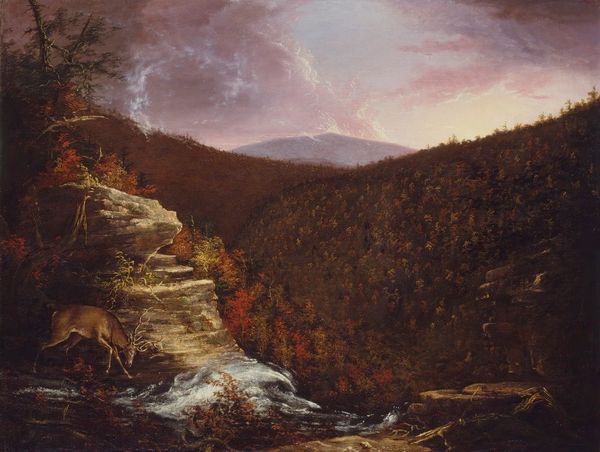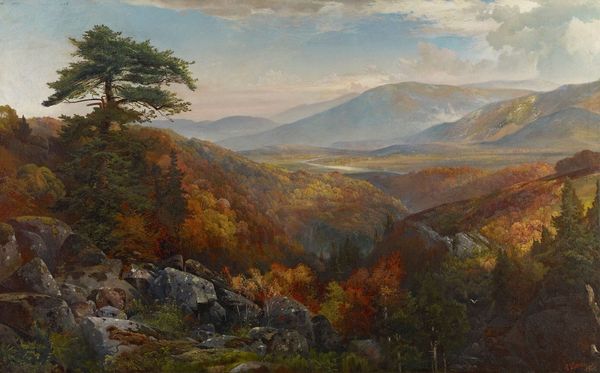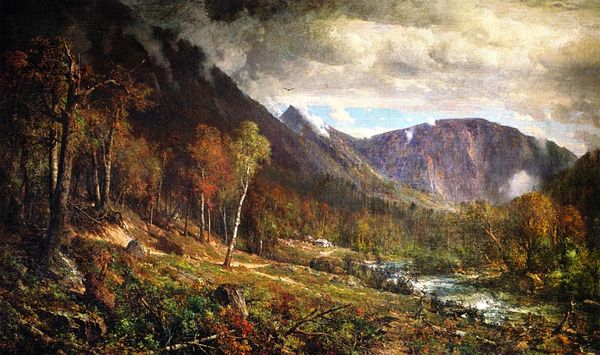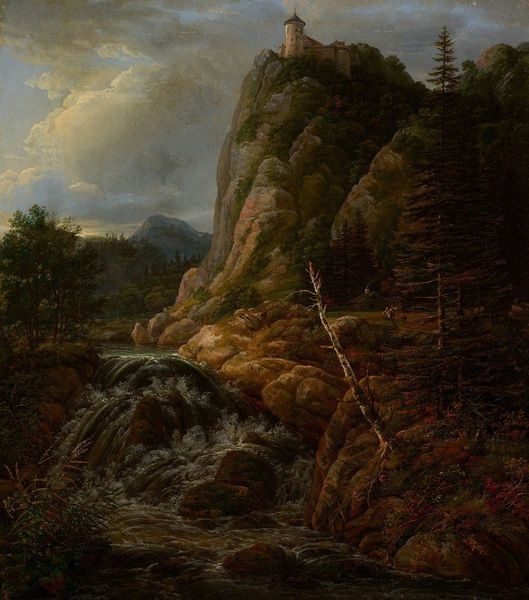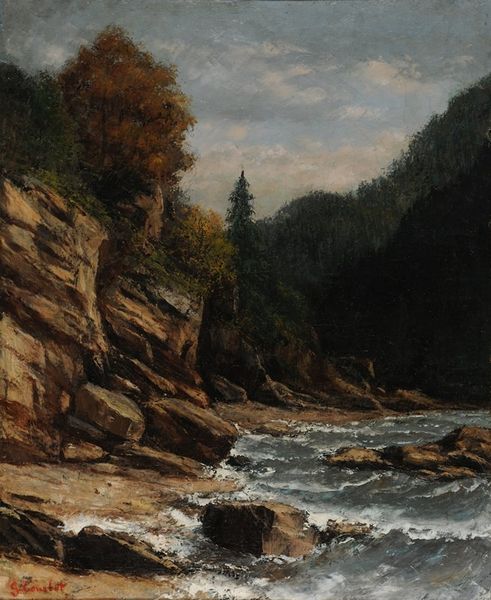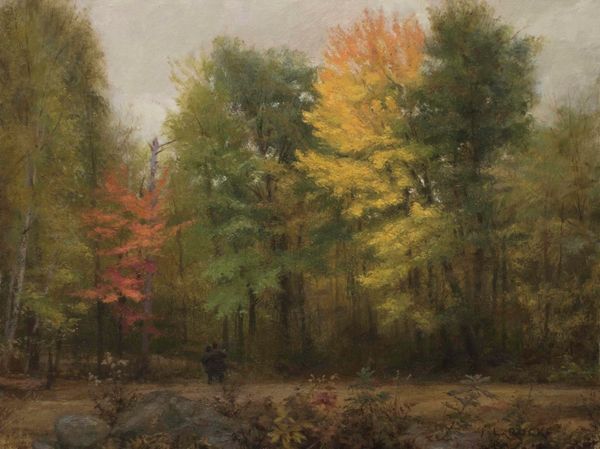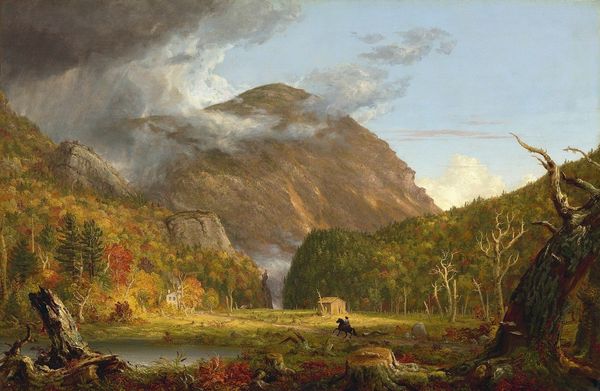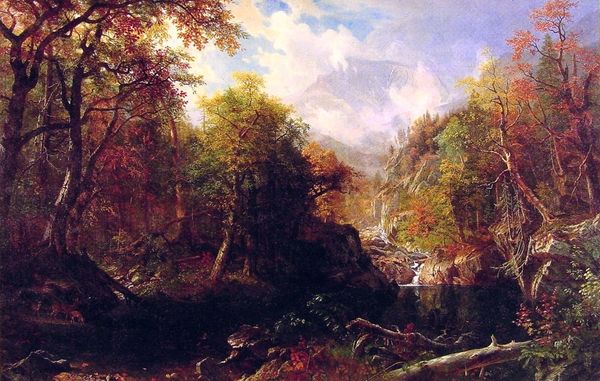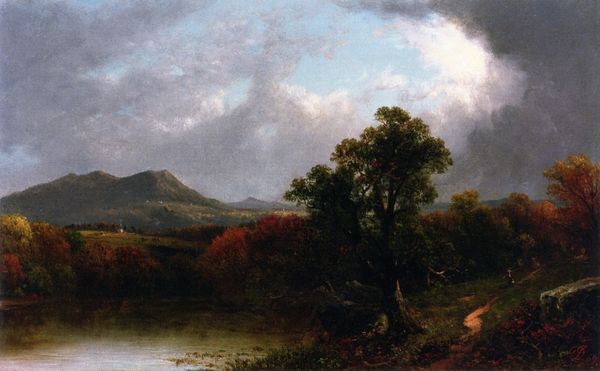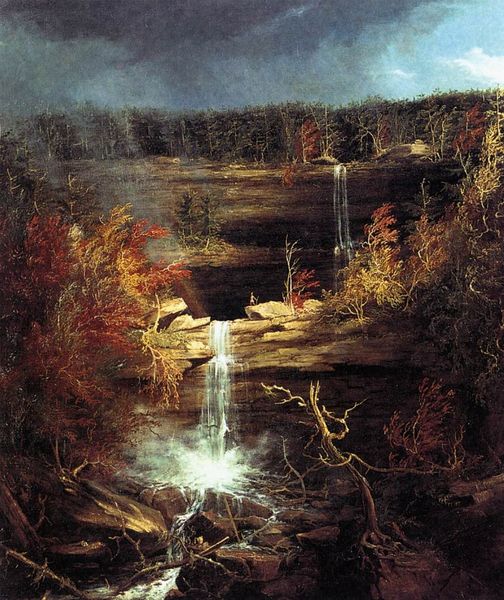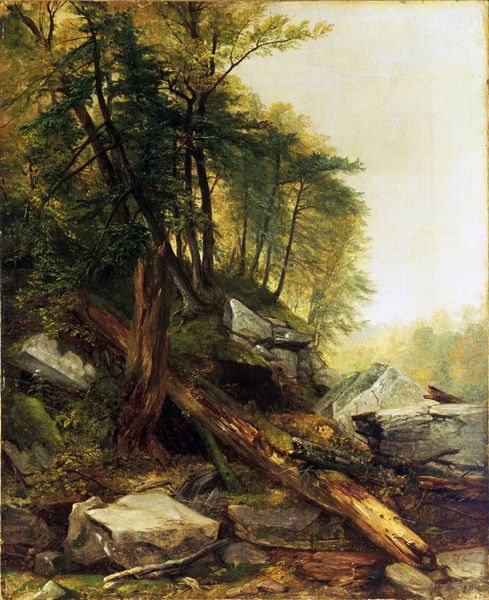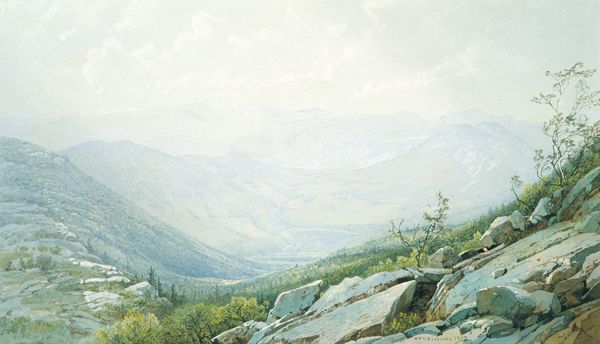
The Clove, Catskills (Double impact) 1827
0:00
0:00
thomascole
New Britain Museum of American Art, New Britain, CT, US
plein-air, oil-paint
#
tree
#
sky
#
plein-air
#
oil-paint
#
landscape
#
leaf
#
impressionist landscape
#
figuration
#
oil painting
#
forest
#
romanticism
#
mountain
#
natural-landscape
#
hudson-river-school
#
nature
Dimensions: 64.14 x 89.22 cm
Copyright: Public domain
Curator: This landscape, bathed in the hues of early autumn, offers us a window into the American wilderness as imagined in the early 19th century. Painted by Thomas Cole in 1827, "The Clove, Catskills (Double impact)" now resides at the New Britain Museum of American Art. Cole, considered the founder of the Hudson River School, captured this vista using oil on canvas, most likely in plein-air. Editor: Immediately, the painting evokes a powerful sense of nature's raw grandeur—a landscape almost untamed, full of shadows. There's something almost primordial about the light here, as it seems to break through an oncoming storm. Curator: Absolutely, and I think this image demonstrates Cole’s skill in infusing the landscape with allegorical weight. Notice how the contrasting light and shadow, which you mentioned, represent themes of nature and wilderness that preoccupied much of American culture in this period. These elements speak of progress and an American ethos, of overcoming the "wilderness". Editor: Do you see that reflected in specific motifs or forms? To me, it seems to convey the awe of confronting the vastness of the American continent. And, despite his reverence for the landscape, this perspective feels like a demonstration of the 'sublime' in nature—beautiful and inspiring, yes, but also formidable. Curator: That is well said. I also wonder about the small waterfall depicted to the lower-left, near some of the foreground rock formations. Water is often deployed as a symbol of renewal, a recurring spiritual element in much painting tradition, even as the light and clouds create drama in the atmosphere beyond the cliffs. It brings a sense of cyclical rebirth to the image. Editor: And the scale is indeed impressive when considering it's not overtly propagandistic; there are no obvious symbolic overtones that are used to portray some grand idea or story about taming of nature and this new nation... but simply that of just nature at a grand scale as-is. I find that particularly powerful given what we know now about the degradation of some natural environments due to unheeded expansion. Curator: Right! And that lack of self-awareness certainly speaks to its period. Considering Cole's role in establishing the Hudson River School, a particularly impactful artistic movement to focus primarily on the wilderness... there's this tension: We simultaneously desire to celebrate it and change it. I believe that internal struggle, between aesthetic appreciation and environmental impact, is at the very core of paintings such as this. Editor: It does seem to represent that liminal period, when we viewed land as both a resource and something to be respected. Seeing this now reminds us of how far we’ve come and how much is left to preserve.
Comments
No comments
Be the first to comment and join the conversation on the ultimate creative platform.
